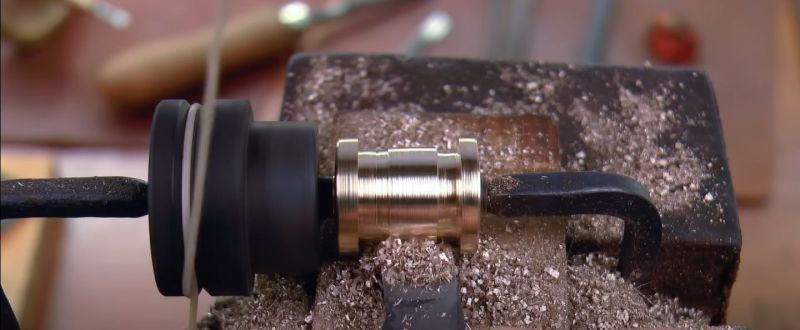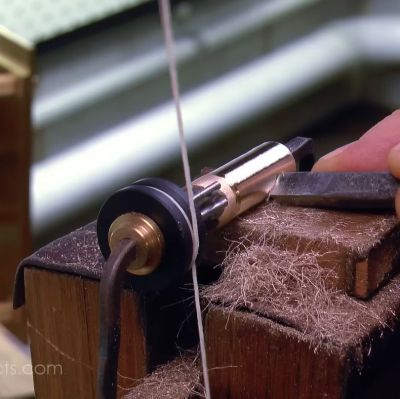

We commonly tend to associate lathes with the Industrial Revolution, when metalworking shifted largely from blacksmiths to machinists, but the use of lathes is much older than that. As [Chris] over at the Clickspring YouTube channel demonstrates in a recent video, small precision lathes were exceedingly common in the Ancient World. Not only is there ample historical evidence of them being used as far back as 1300 BCE in Ancient Egypt, but they’re also the most optimal way to get perfectly round pins and other, more intricate shapes that would be an absolute nightmare to create with just some metal files and chisels.
In the video, [Chris] uses two metal hooks, bent in a ninety-degree angle and clamped down in a vise, tapering towards each other into points. A bow string around a round piece of wood is used to bootstrap a more permanent retention element and bushing for the bow string as it is drawn over the wood to rotate it. Subsequent material that has to be worked on in the lathe is then clamped between the two points. This way, using basic materials that have been around for thousands of years and some muscle power, it’s possible to create a small lathe that can be used to create perfectly symmetrical shapes, such as those used in the construction of the Antikythera Mechanism, which [Chris] has been rebuilding for the past years, using only period-correct tools. He’s learned a lot about the mechanism in the process.
0 Commentaires